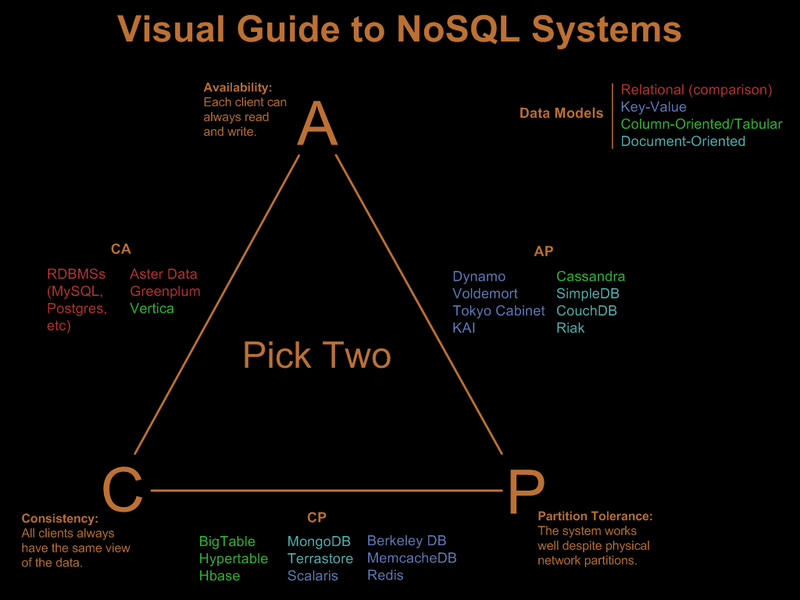CAP theory in NoSQL

Introduction to CAP
- Consistency means that each client always has the same view of the data.
- Availability means that all clients can always read and write.
- Partition tolerance means that the system works well across physical network partitions.
Consistent, Available (CA) Systems
have trouble with partitions and typically deal with it with replication.
- Traditional RDBMSs like Postgres, MySQL, etc (relational)
- Vertica (column-oriented)
- Aster Data (relational)
- Greenplum (relational)
Consistent, Partition-Tolerant (CP) Systems
have trouble with availability while keeping data consistent across partitioned nodes.
- BigTable (column-oriented/tabular)
- Hypertable (column-oriented/tabular)
- HBase (column-oriented/tabular)
- MongoDB (document-oriented)
- Terrastore (document-oriented)
- Redis (key-value)
- Scalaris (key-value)
- MemcacheDB (key-value)
- Berkeley DB (key-value)
Available, Partition-Tolerant (AP) Systems
achieve “eventual consistency” through replication and verification.
- Dynamo (key-value)
- Voldemort (key-value)
- Tokyo Cabinet (key-value)
- KAI (key-value)
- Cassandra (column-oriented/tabular)
- CouchDB (document-oriented)
- SimpleDB (document-oriented)
- Riak (document-oriented)

Reference
https://blog.nahurst.com/visual-guide-to-nosql-systems